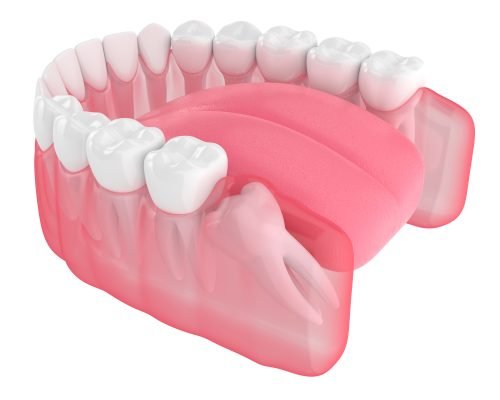Definition and Common Procedures
Maxillofacial surgery is a medical specialty that focuses on the diagnosis and surgical treatment of diseases, injuries and defects affecting the region of the:
- face
- head
- neck
- jaw and related structures
Definition and Scope of Maxillofacial Surgery
Our Maxillofacial surgeon addresses a wide range of conditions, from correcting facial deformities to reconstructing defects caused by trauma or disease; also working closely with other specialists, such as prosthodontists, orthodontists, otolaryngologists, oncologists and radiologists, to provide a comprehensive, multidisciplinary approach to the treatment of patients.
Common Procedures in Maxillofacial Surgery
Below are some of the most common procedures performed by maxillofacial surgeons:
1. Orthognathic Surgery:
Orthognathic surgery is performed to correct malocclusions and skeletal deformities in the mandible and maxilla. These problems can cause bite difficulties, speech problems, chronic jaw pain, and affect facial appearance.
The procedure involves making precise cuts to the facial bones and repositioning them into a more suitable position. This may involve mobilization of the upper or lower jaw, or both, and may require the use of fixations such as plates and screws to stabilize the bones during healing.
2. Reconstructive Surgery:
Maxillofacial reconstructive surgery is used to correct facial defects caused by trauma, birth defects, tumors, or other medical conditions. By using advanced techniques, we are able to restore proper form and function to affected facial structures. This may include tissue transfer, such as bone or skin grafts, and the use of implants to reconstruct damaged areas.
The main objective is to improve the patient’s facial appearance, respiratory function, chewing and quality of life.
3. Dental Implant Surgery:
Dental implant surgery is a procedure used to replace missing or damaged teeth with an effective and long-lasting solution to restore chewing function and improve dental aesthetics.
4. Facial Fractures:
Fractures to the facial bones, such as the maxilla, mandible, nasal bones, and orbital bones, are common in facial trauma. Maxillofacial surgeons perform reduction procedures, which involve aligning and fixing broken bones to allow proper healing. This may require the use of plates and screws to stabilize the bones during the healing process.
5. Temporomandibular Joint Dysfunction (TMJ):
The temporomandibular joint (TMJ) is the joint that connects the jaw to the skull. TMJ dysfunction is a disorder that affects the ability of the jaw to move properly and can cause pain, discomfort, and limitations in chewing function and speech.
Maxillofacial surgery plays an important role in the diagnosis and treatment of TMJ dysfunction, working to relieve symptoms and improve patients’ quality of life.
Causes of TMJ Dysfunction:
Bruxism: Teeth grinding and clenching can put pressure on the TMJ and surrounding muscles, causing pain and dysfunction.
Malocclusion: Poor alignment of teeth can contribute to TMJ dysfunction by forcing the jaw to move abnormally.
Traumatic Injuries: Trauma to the jaw or head region can damage the TMJ and its components.
Stress and Muscle Tension: Stress can lead to muscle tension in the jaw and TMJ, causing symptoms of dysfunction.
6. Mentoplasty (Chin Surgery):
Mentoplasty is performed to improve the contour and projection of the chin; it can be either a chin augmentation or chin reduction procedure, depending on the patient’s facial characteristics and goals. It is meant to improve facial balance and to also highlight facial features, in a more harmonious way.
7. Bichectomy:
Bichectomy is a cosmetic surgical procedure in which pockets of fat called Bichat’s bags, located on the cheeks, are partially removed. This technique has gained popularity in the field of facial cosmetic surgery due to its ability to slim and contour the face, enhancing facial features and providing a more sculpted appearance.
8. Blepharoplasty (Eyelid Surgery):
Blepharoplasty is a cosmetic surgery that focuses on the upper and lower eyelids. It is performed to remove excess skin and fat around the eyes, reduce bags under the eyes and correct drooping eyelids. The result is a more rejuvenated and rested appearance in the periocular region.
9. Botox:
In addition to traditional surgical procedures, maxillofacial surgeons may also use non-surgical treatments to address certain aesthetic and functional problems in the facial region. One of these treatments is the use of botulinum toxin type A, commonly known as Botox.
Botox is used in cases of bruxism, which is involuntary teeth grinding and jaw clenching. It may also help relieve Temporomandibular Dysfunction (TMD) symptoms, such as headaches and jaw pain. By injecting Botox into the chewing muscles, their activity is reduced, which can reduce tightness and pain.
Another use is for addressing a Gummy Smile, where an excessive amount of gum is shown when smiling. Botox can be injected into the muscles that lift the upper lip to reduce gum exposure and improve the aesthetics of the smile.
10. Wisdom Teeth Extraction:
 It is generally a surgical procedure in which the third molars are extracted, which are the last molars located in the dental arches; it is usually possible to identify their eruption through a radiographic finding or with the onset of painful symptoms and inflammation.
It is generally a surgical procedure in which the third molars are extracted, which are the last molars located in the dental arches; it is usually possible to identify their eruption through a radiographic finding or with the onset of painful symptoms and inflammation.
It is important to extract them, because their permanence in the patients’ mouth can cause cysts, tumors, and odontogenic infections, among many other complications.
